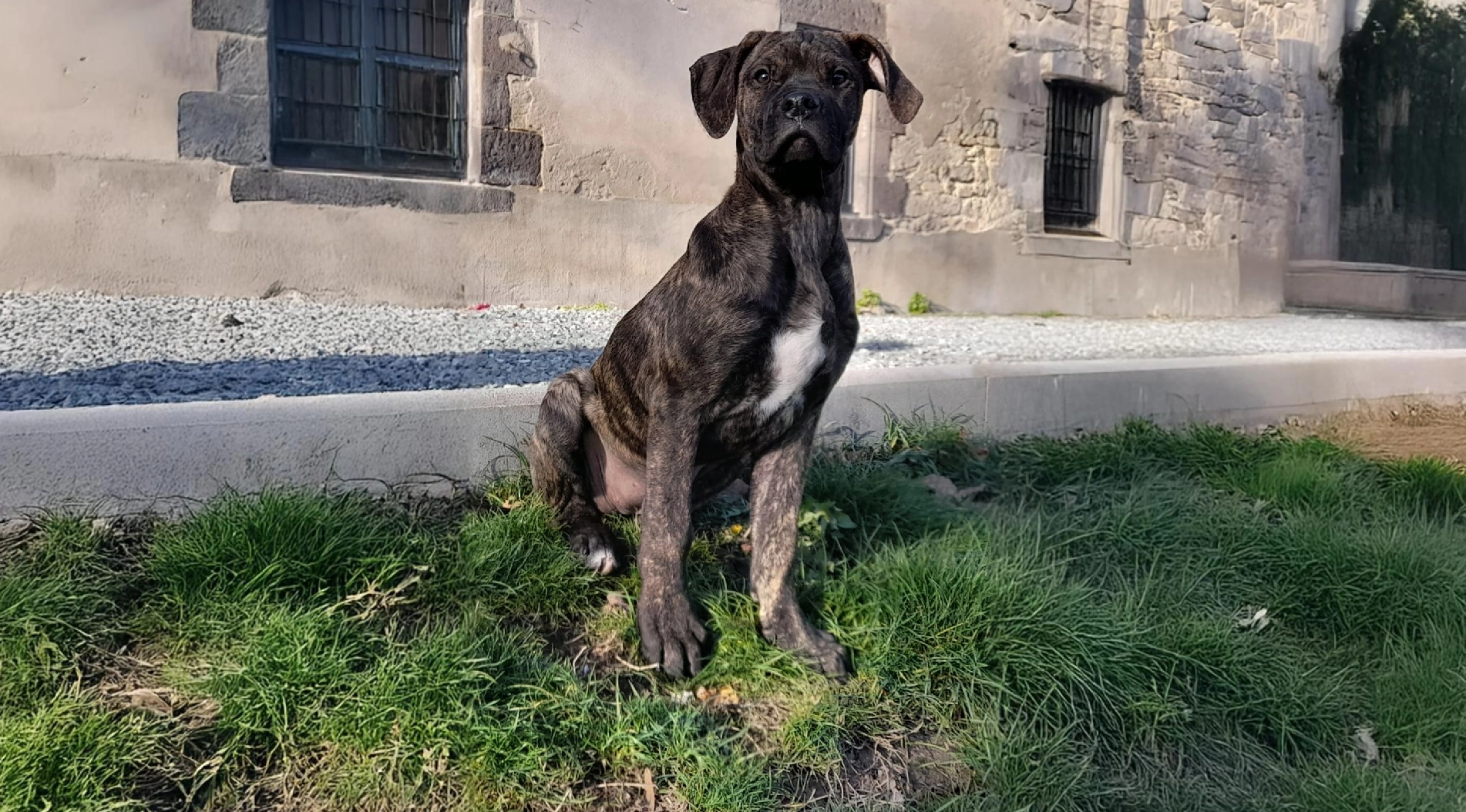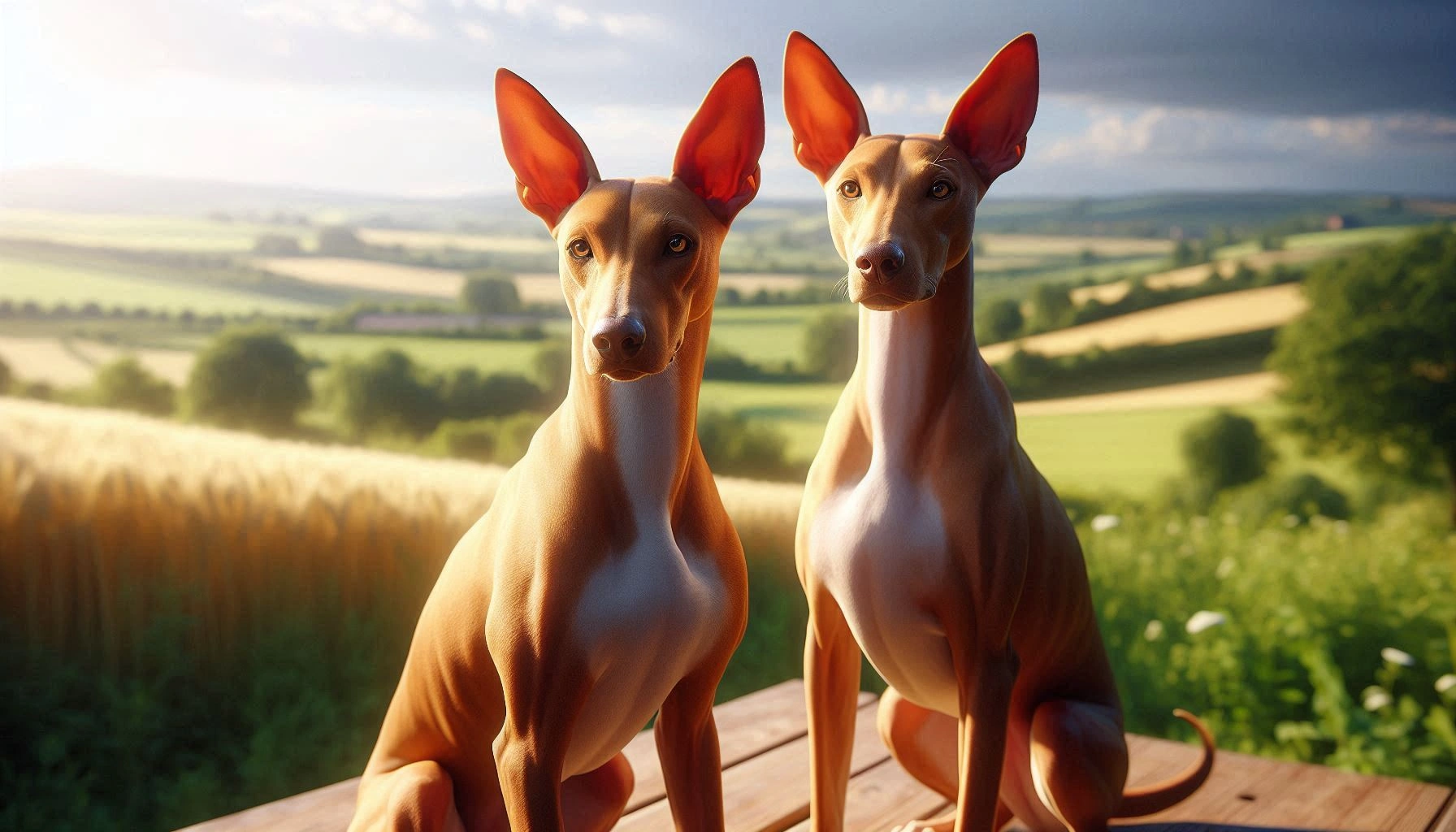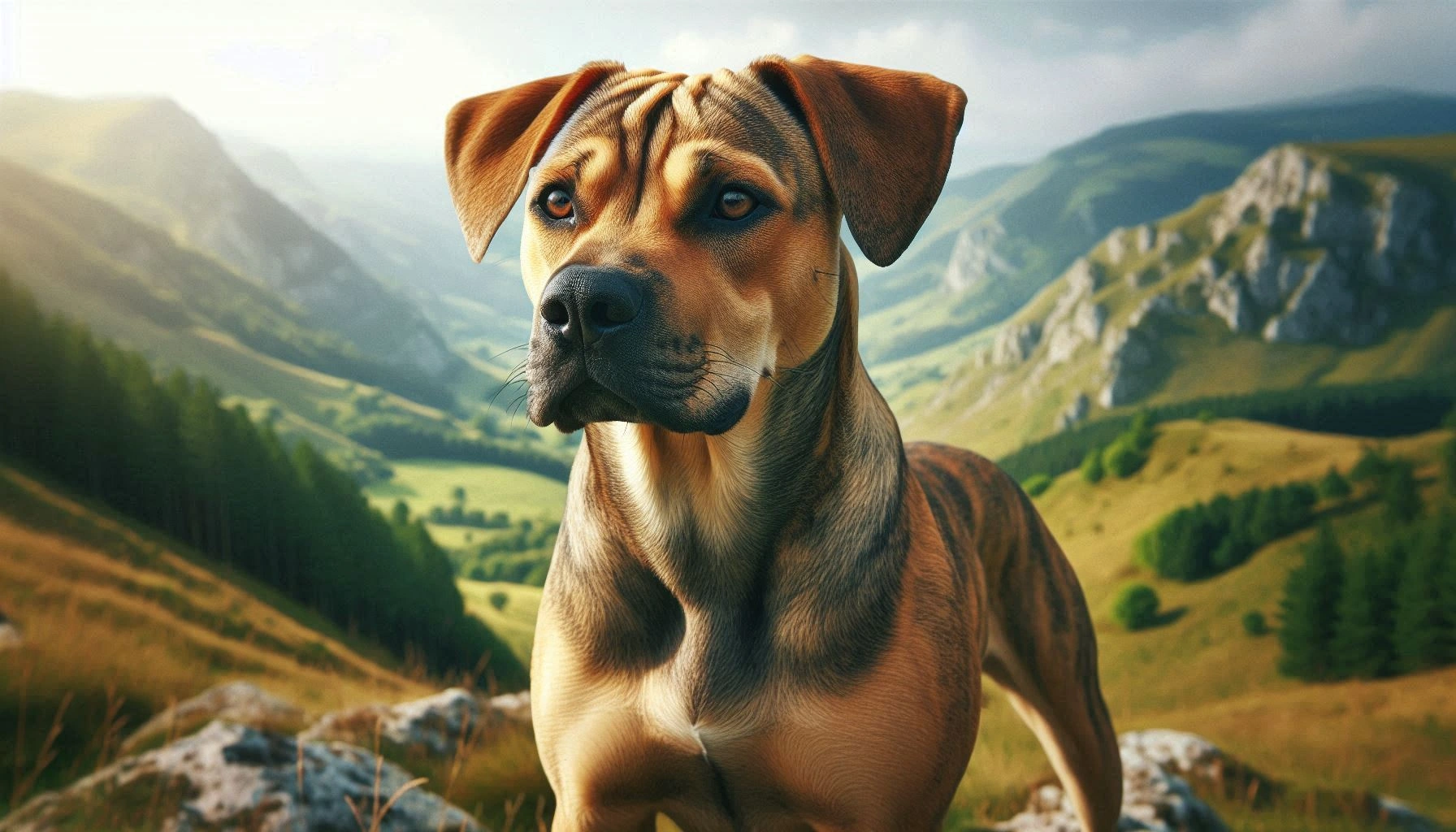Table of Contents
Galgo Español Dog Breed
The Galgo Español, also known as the Spanish Greyhound, is a breed renowned for its elegance, speed, and gentle demeanor. This ancient breed is particularly popular among dog enthusiasts for its unique combination of physical prowess and affectionate personality. With a slender build and keen hunting instincts, the Galgo Español is a dog that has captured the hearts of many around the world. In this article, we will explore the history, physical characteristics, temperament, health, and care requirements of this fascinating breed, making it easier for potential owners to understand what makes the Galgo Español such a special companion.
History and Origin

The Galgo Español has a rich history that dates back thousands of years. Originating in Spain, this breed was traditionally used for hunting game such as hares due to its remarkable speed and agility. The name “Galgo” comes from the Latin word “canis Gallicus,” meaning “Gaulish dog.” There is evidence to suggest that the breed’s ancestors were brought to the Iberian Peninsula by the Celts around the 6th century BC.
Throughout history, the Galgo Español has been a favored breed among Spanish nobility and hunters. Their keen eyesight and incredible stamina made them ideal for coursing, a sport where dogs chase game by sight rather than scent. Despite facing numerous challenges, including periods of decline in popularity, the Galgo Español has survived and thrived, maintaining its status as a beloved breed in Spain and beyond.
Physical Characteristics

The Galgo Español is a strikingly elegant dog with a slender, athletic build that reflects its speed and agility. Here are some of the key physical characteristics of the breed:
Size and Build
- Height: Males typically stand between 24 to 28 inches at the shoulder, while females are slightly shorter, ranging from 23 to 27 inches.
- Weight: Both males and females generally weigh between 50 to 65 pounds.
- Build: The breed has a narrow body, long legs, and a deep chest, which contribute to its ability to run at high speeds.
Coat Type and Colors
- Coat: The Galgo Español has a short, dense coat that provides protection without adding bulk. Some individuals may have a rough coat with longer, wiry hair.
- Colors: Common coat colors include black, brindle, fawn, white, and various shades of grey and brown. The breed’s coat can also feature a combination of these colors in patterns.
Distinctive Features
- Head: The Galgo Español has a long, narrow head with a slightly arched skull and a prominent stop.
- Ears: The ears are set high and are typically folded back, giving the breed an alert and intelligent expression.
- Eyes: The eyes are large and expressive, often dark in color, contributing to the breed’s soulful appearance.
Temperament and Personality
The Galgo Español is known for its calm and gentle temperament. Here are some of the key personality traits of the breed:
Interaction with People
- Affectionate: Galgos are known for their affectionate nature and strong bond with their owners. They are often described as “velcro dogs” due to their tendency to stick close to their humans.
- Gentle: Despite their history as hunters, Galgos are generally gentle and tolerant, making them great companions for families.
Interaction with Children and Other Animals
- Good with Children: The Galgo Español is typically good with children, showing patience and a gentle demeanor. However, as with all breeds, interactions should be supervised to ensure safety.
- Compatibility with Pets: Galgos can coexist peacefully with other dogs, especially when socialized from a young age. Their high prey drive means they may be inclined to chase smaller animals, so introductions should be managed carefully.
Personality Traits
- Calm: At home, Galgos are often calm and relaxed, enjoying lounging around and snuggling with their family.
- Intelligent: The breed is intelligent and can be trained effectively with positive reinforcement techniques.
- Sensitive: Galgos are sensitive dogs that respond well to gentle training methods and a nurturing environment.
Health and Lifespan
The Galgo Español is generally a healthy breed, but like all dogs, they can be prone to certain health issues. Here are some common health concerns and tips for maintaining their well-being:
Common Health Issues
- Hip Dysplasia: This genetic condition can affect the breed’s hip joints, leading to pain and mobility issues. Regular veterinary check-ups and maintaining a healthy weight can help manage this condition.
- Heart Problems: Some Galgos may be prone to heart conditions, such as dilated cardiomyopathy. Regular heart screenings can help detect issues early.
- Bloat: Due to their deep chests, Galgos are at risk of bloat, a potentially life-threatening condition where the stomach twists. Feeding smaller, frequent meals and avoiding vigorous exercise after eating can help reduce the risk.
Lifespan
The average lifespan of the Galgo Español is between 10 to 14 years. With proper care, many Galgos can enjoy a long, healthy life.
Health Tips
- Regular Check-ups: Routine veterinary visits are essential to monitor and maintain the breed’s health.
- Balanced Diet: Providing a balanced, high-quality diet tailored to the breed’s needs can help prevent obesity and other health issues.
- Exercise: Regular exercise is crucial for maintaining the breed’s physical and mental health.
Care and Grooming
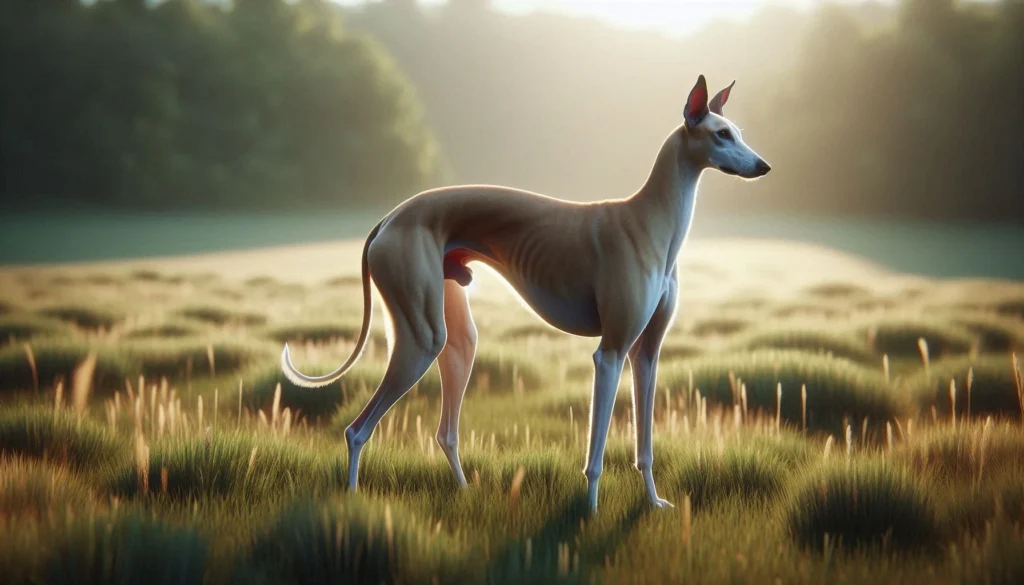
Caring for a Galgo Español involves meeting their grooming, exercise, and dietary needs. Here are some practical tips:
Grooming Needs
- Coat Care: The Galgo’s short coat is relatively low maintenance. Regular brushing can help remove loose hair and keep the coat looking its best.
- Bathing: Bathe the dog as needed, typically every few months, or when they get particularly dirty.
- Nail Trimming: Regular nail trimming is important to prevent overgrowth and discomfort.
- Ear Cleaning: Check and clean the ears regularly to prevent infections.
Exercise Requirements
- Daily Exercise: Galgos are active dogs that require regular exercise to stay healthy and happy. Daily walks, playtime, and opportunities to run in a secure area are recommended.
- Mental Stimulation: Provide toys and engage in interactive games to keep their minds stimulated.
Dietary Recommendations
- High-Quality Food: Feed a high-quality dog food that meets the breed’s nutritional needs. Consult with a veterinarian for specific dietary recommendations.
- Portion Control: Monitor food intake to prevent obesity, which can exacerbate health issues.
Training and Socialization
Training and socializing a Galgo Español can be a rewarding experience. Here are some tips for success:
Training Tips
- Positive Reinforcement: Use positive reinforcement techniques, such as treats and praise, to encourage desired behaviors.
- Consistency: Be consistent with commands and routines to help the dog understand what is expected.
- Patience: Galgos can be sensitive, so it’s important to be patient and avoid harsh training methods.
Socialization Strategies
- Early Socialization: Expose the dog to a variety of people, places, and situations from a young age to build confidence and reduce fearfulness.
- Controlled Introductions: Introduce the dog to other animals in a controlled manner to ensure positive interactions.
Suitability as a Family Pet

The Galgo Español can make a wonderful family pet for the right household. Here are some factors to consider:
Living Environment
- Space Needs: While Galgos can adapt to apartment living, they thrive in homes with access to a secure yard where they can run and play.
- Indoor Living: Galgos enjoy being indoors with their family and can be quite calm and relaxed when at home.
Energy Levels
- Moderate Activity: Galgos have bursts of high energy but are generally calm and relaxed indoors. They enjoy regular exercise but are not hyperactive.
Compatibility with Families
- Children: Galgos are typically good with children and can be gentle playmates.
- Other Pets: With proper socialization, Galgos can coexist peacefully with other dogs. Caution is needed with small animals due to their prey drive.
Fun Facts and Trivia
- Ancient Lineage: The Galgo Español’s lineage dates back thousands of years, with roots tracing back to ancient Egypt.
- Adoption Trend: In recent years, there has been a growing movement to adopt retired Galgos from Spain, providing them with loving homes after their hunting careers end.
- Couch Potatoes: Despite their athletic build, Galgos are known for being couch potatoes and love lounging around the house.
Dog Breeds Similar to Galgo Español
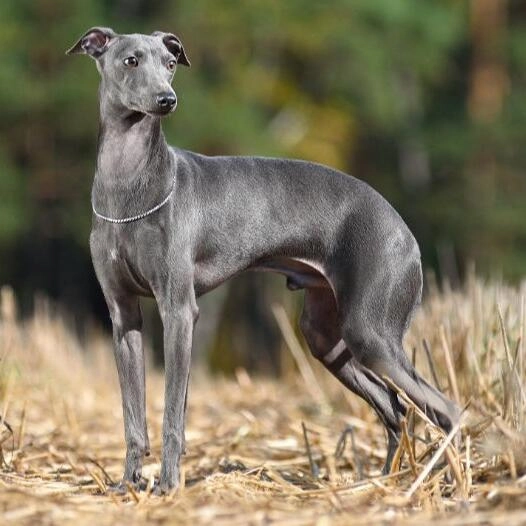

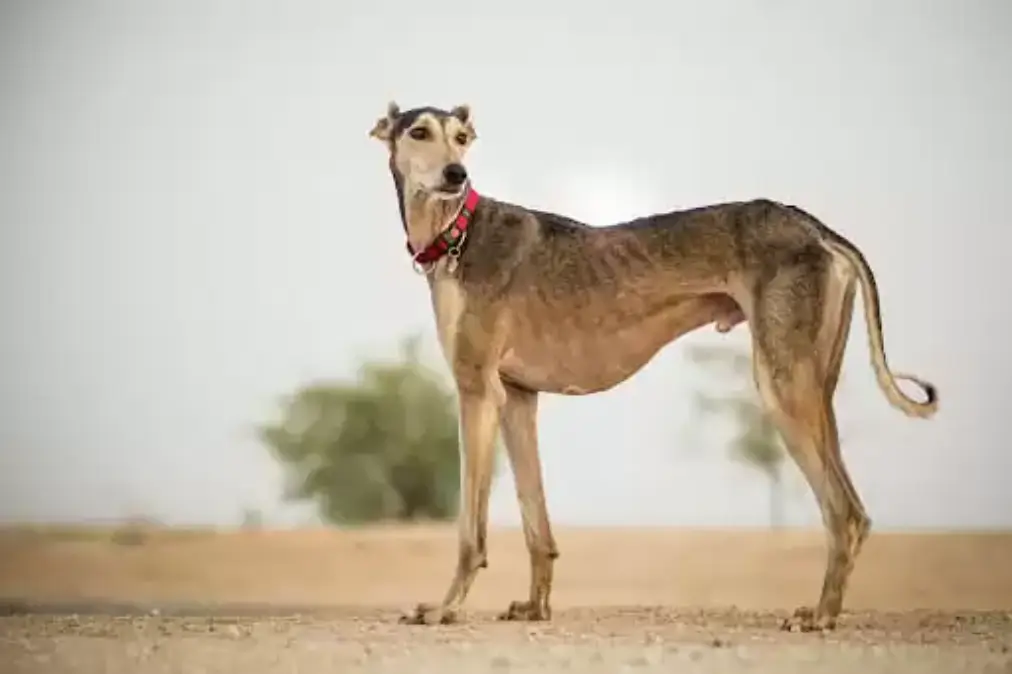
Greyhound
The Greyhound is a close relative of the Galgo Español, sharing similar physical characteristics and a history of coursing. Greyhounds are known for their incredible speed and gentle temperament.
Whippet
Whippets are smaller than Galgos but share a similar build and personality. They are affectionate, energetic, and make excellent companions for active families.
Saluki
The Saluki, also known as the Persian Greyhound, is another ancient sighthound breed. Salukis are known for their grace, speed, and gentle nature, making them comparable to the Galgo Español in many ways.
Conclusion
The Galgo Español is a breed that combines elegance, speed, and a loving temperament, making it a wonderful companion for the right owner. With proper care, training, and socialization, this breed can thrive in a variety of living environments. Whether you’re drawn to their rich history, unique physical characteristics, or gentle personality, the Galgo Español is a breed worth considering.
FAQ
Is the Galgo Español a dangerous dog?
No, the Galgo Español is not considered a dangerous dog. They are known for their gentle and affectionate nature. However, like all breeds, proper training and socialization are essential to ensure they behave well around people and other animals.
Is the Galgo Español the best guard dog to protect you or your family?
The Galgo Español is not typically used as a guard dog. They are more known for their gentle and calm demeanor rather than protective instincts. While they may alert their owners to strangers, they do not have the aggressive traits commonly associated with guard dogs.
